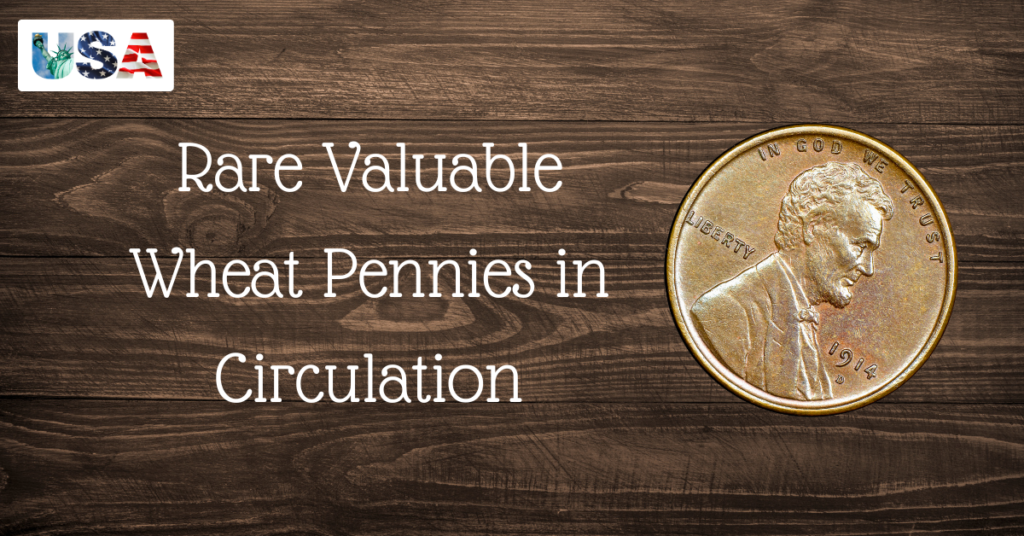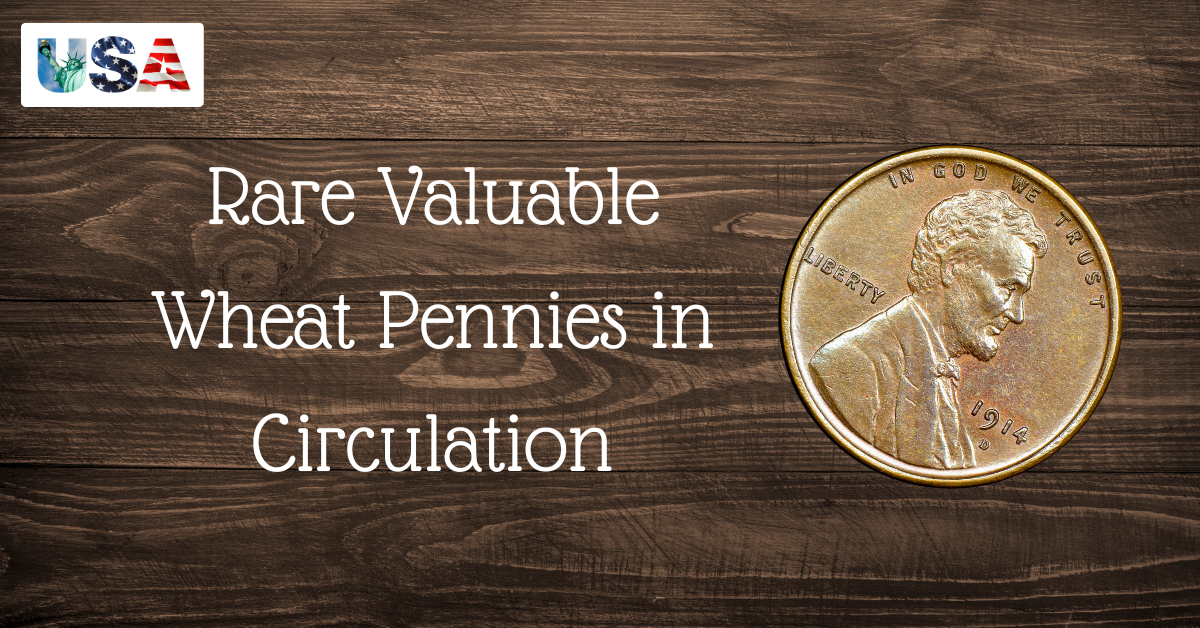
The Lincoln Wheat Penny, minted between 1909 and 1958, holds a unique place in the history of U.S. coinage. While originally valued at one cent, certain rare versions of this coin have gained significant value over the years. Some of these rare pennies have sold for hundreds of thousands of dollars at auctions, making them a sought-after piece for collectors.
A Brief History of the Lincoln Wheat Penny
The Lincoln Wheat Penny was introduced in 1909 to honor the 100th anniversary of Abraham Lincoln’s birth. Designed by sculptor Victor David Brenner, the penny marked the first time a U.S. coin featured the image of a real person. The obverse of the coin displays a profile of President Lincoln, while the reverse features two wheat stalks symbolizing agricultural prosperity.
This penny’s historical significance is further amplified by its connection to pivotal moments in American history, including the Great Depression and World War II. It served as a representation of resilience and progress during challenging times.
What Makes Some Lincoln Wheat Pennies Valuable?
While most Lincoln Wheat Pennies are worth little more than their face value, certain factors elevate their worth:
1. Rarity
Coins with limited mintage or unique production circumstances tend to be more valuable. For example, the 1943 bronze penny, accidentally struck during a year when pennies were primarily made of steel, is extremely rare.
2. Minting Errors
Mistakes during the minting process, such as doubled dies, missing mint marks, or off-center strikes, create unique coins that are highly prized by collectors.
3. Condition
The condition of a coin significantly impacts its value. Coins with minimal wear, sharp details, and original luster are far more valuable than those that are damaged or heavily circulated.
4. Historical Context
Coins from significant eras, such as wartime or economic crises, carry added historical value, making them desirable to collectors.
Notable Rare Lincoln Wheat Pennies
Here are some of the most valuable Lincoln Wheat Pennies to watch for:
- 1909-S VDB: This coin, featuring the initials of its designer, is a key date in the series and highly coveted.
- 1914-D: With limited production, this penny is one of the scarcest and most sought-after by collectors.
- 1922 No D: An error coin from the Denver Mint where the “D” mint mark is missing.
- 1943 Bronze Penny: Produced by mistake during World War II, this penny is considered one of the rarest coins in U.S. history.
- 1955 Doubled Die: Known for its dramatic doubling in the date and lettering, this penny is an iconic error coin.
Identifying a Rare Lincoln Wheat Penny
If you think you might have a valuable Lincoln Wheat Penny, follow these steps:
- Check the Date: Look for key years like 1909, 1914, 1922, 1931, and 1943.
- Examine Mint Marks: Mint marks such as “D” (Denver) or “S” (San Francisco) can indicate rarity. Coins without a mint mark were produced in Philadelphia.
- Inspect for Errors: Look for anomalies like doubling in the design or missing mint marks.
- Assess Condition: Coins in uncirculated or near-mint condition are more valuable.
Tips for Collectors
If you’ve discovered a potentially valuable Lincoln Wheat Penny, here’s how to handle it:
- Avoid Cleaning the Coin: Cleaning can scratch the surface and significantly reduce its value.
- Store Properly: Use protective holders or cases to prevent damage.
- Get Professional Grading: Have your coin authenticated and graded by a reputable service to determine its true value.
Conclusion
The Lincoln Wheat Penny is more than just a piece of currency; it’s a symbol of America’s rich history and resilience. While most of these coins are common, certain rare varieties hold significant value. Whether you’re a seasoned collector or new to the hobby, keeping an eye out for these hidden treasures could lead to discovering a valuable piece of history.
So, next time you’re sorting through loose change, take a closer look—you might just uncover a penny worth far more than its face value.
FAQ’s
Q1. What is the Lincoln Wheat Penny?
The Lincoln Wheat Penny is a U.S. coin minted from 1909 to 1958. It features a profile of President Abraham Lincoln on the obverse and two wheat stalks on the reverse, symbolizing prosperity and America’s agricultural roots.
Q2. Why are some Lincoln Wheat Pennies valuable?
Some Lincoln Wheat Pennies are valuable due to factors like rarity, minting errors, condition, and historical significance. Rare versions, such as the 1943 bronze penny or 1909-S VDB, can fetch thousands of dollars.
Q3. What makes the 1943 bronze penny so special?
In 1943, pennies were supposed to be made from steel due to copper shortages during World War II. However, a few bronze planchets were accidentally used, creating one of the rarest and most valuable coins in U.S. history.
Q4. How can I identify a rare Lincoln Wheat Penny?
To identify a rare Lincoln Wheat Penny:
- Check the year (e.g., 1909, 1914, 1922, 1943).
- Look for mint marks like “S” (San Francisco) or “D” (Denver).
- Inspect for minting errors, such as doubling or missing marks.
- Evaluate the coin’s condition—better-preserved coins are more valuable.
Q5. Are Lincoln Wheat Pennies still found in circulation?
Yes, Lincoln Wheat Pennies can occasionally be found in circulation, though it’s rare. Searching through old coin rolls or inherited collections increases your chances of finding one.
Q6. How much is a 1909-S VDB Lincoln Wheat Penny worth?
The value of a 1909-S VDB penny depends on its condition. It can range from several hundred dollars in circulated condition to thousands of dollars if uncirculated.
Q7. What are mint marks, and why are they important?
Mint marks indicate where a coin was produced. For Lincoln Wheat Pennies, “D” signifies the Denver Mint, “S” the San Francisco Mint, and no mint mark denotes the Philadelphia Mint. Certain mint marks, like the “S” in 1909-S VDB, increase a coin’s rarity and value.
Q8. What are minting errors, and why do they matter?
Minting errors occur during the coin production process and can include doubling, off-center strikes, or missing mint marks. These errors make coins unique and highly sought after by collectors.
Q9. Should I clean my Lincoln Wheat Pennies to improve their appearance?
No, cleaning a coin can damage its surface and significantly reduce its value. It’s best to leave coins in their natural state and store them in protective holders.
Q10. How can I determine the value of my Lincoln Wheat Penny?
The value of your penny depends on its rarity, condition, mint mark, and potential errors. Professional grading services like PCGS or NGC can authenticate and provide a detailed valuation of your coin.
